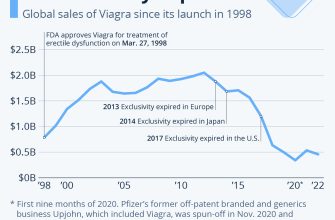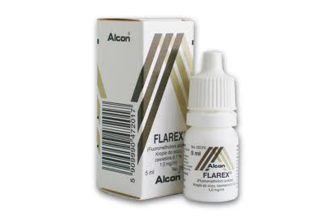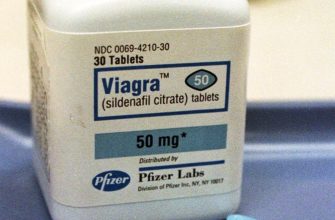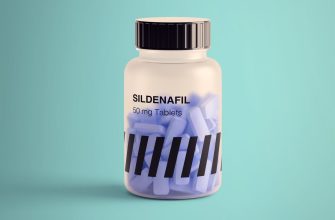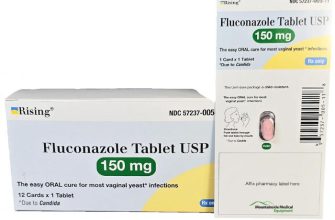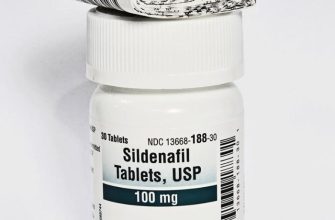Need medication quickly and easily? Visit www.inhousepharmacy.com. We offer a streamlined online ordering process, guaranteeing a seamless experience from prescription submission to delivery.
Our dedicated team of pharmacists verifies prescriptions and ensures accurate dispensing. We prioritize patient safety and provide clear, concise instructions with each order. Expect prompt, reliable shipping and personalized support throughout the process. We use secure, encrypted channels to protect your personal information, giving you peace of mind.
Beyond convenient ordering, we offer competitive pricing and a wide selection of medications. Managing your health shouldn’t be stressful; www.inhousepharmacy.com simplifies the process, saving you time and reducing hassle. Explore our website today and experience the difference.
Contact us with any questions. Our customer service representatives are available to assist you and answer any inquiries you may have. We are committed to providing exceptional pharmaceutical care.
- Www.inhousepharmacy.com: A Comprehensive Guide
- What is In-House Pharmacy and How Does it Work?
- Benefits of Utilizing an In-House Pharmacy for Businesses
- Cost Savings and Return on Investment with In-House Pharmacies
- Regulatory Compliance and Legal Aspects of In-House Pharmacies
- Medication Procurement and Distribution
- Patient Privacy and Data Security
- Liability and Insurance
- Technology and Software Solutions for In-House Pharmacy Management
- Inventory Management Software
- Prescription Management Systems
- Patient Management Tools
- Data Analytics and Reporting
- Security and Compliance
- Choosing the Right Software
- Staffing and Training Requirements for an Effective In-House Pharmacy
- Security and Inventory Management within In-House Pharmacies
- Physical Security Measures
- Medication Handling Procedures
- Data Security
- Inventory Control Strategies
- Regular Compliance Audits
- Case Studies: Successful Implementations of In-House Pharmacies
- Quantifiable Results:
- Key Improvements:
Www.inhousepharmacy.com: A Comprehensive Guide
Check their website for current pricing and prescription requirements. They offer a wide range of medications.
Verify your insurance coverage before ordering. Many plans cover medications from online pharmacies like InHousePharmacy.com.
Review their customer service policies; read online reviews to gauge their responsiveness and helpfulness. Contact them directly with questions about specific medications or services.
Familiarize yourself with their shipping options and delivery times. Factor this into your medication needs planning. International shipping options may vary.
Compare InHousePharmacy.com’s prices with other online and local pharmacies. Price discrepancies can be significant depending on the medication.
Ensure that the website uses a secure connection (HTTPS) to protect your personal and payment information. Look for security certifications and trust seals.
Be aware of potential delays caused by customs or other unforeseen circumstances, particularly for international orders. Plan accordingly.
Always consult your doctor or pharmacist before starting or changing any medication, including those ordered online. They can advise on potential interactions and dosage.
Keep a record of your orders and prescriptions for your own records. This can be helpful for insurance claims or future reference.
Read the product information leaflets carefully before taking any medication. Pay attention to warnings and precautions.
What is In-House Pharmacy and How Does it Work?
Consider an in-house pharmacy a dedicated medication dispensing service located within a healthcare facility, like a hospital or long-term care center. This setup streamlines medication management for patients.
How it works: Physicians submit medication orders directly to the in-house pharmacy. Pharmacists verify these orders, prepare medications, and dispense them according to specific patient needs and schedules. They also actively monitor drug interactions and allergies, ensuring patient safety.
Benefits include improved medication accuracy and reduced delays. Direct access allows for faster response times to urgent medication requests. Close collaboration between pharmacists and healthcare providers enhances patient care. Real-time medication reconciliation helps minimize errors.
Specific examples: An in-house pharmacy might manage IV medications, preparing and administering them under the supervision of nurses. They also handle unit-dose packaging for oral medications, ensuring patients receive the correct dose at the right time. The pharmacy manages inventory, ordering and receiving supplies as needed.
In short, in-house pharmacies provide a controlled and efficient medication management system, enhancing patient safety and overall healthcare delivery.
Benefits of Utilizing an In-House Pharmacy for Businesses
Streamline your employee healthcare and boost productivity with an in-house pharmacy. This offers several key advantages:
- Reduced healthcare costs: Negotiate lower medication prices through bulk purchasing and eliminate the administrative overhead associated with processing insurance claims and reimbursements. Studies show this can lead to savings of up to 20% on medication costs.
- Improved employee satisfaction and retention: Convenient access to medications improves employee well-being and reduces time off for medication pick-up. This translates to higher morale and reduced turnover.
- Enhanced medication adherence: On-site pharmacists can provide personalized counseling and monitoring, leading to better medication adherence and improved health outcomes. This directly reduces healthcare expenses long-term.
- Increased productivity: Employees spend less time obtaining medications, allowing them to focus on their work. This translates into tangible productivity gains, positively impacting your bottom line.
- Improved safety and security: Secure storage and controlled dispensing reduce medication errors and prevent misuse or diversion. This mitigates potential legal and financial risks.
Consider these practical steps:
- Assess your needs: Evaluate your workforce’s medication usage patterns to determine the feasibility and potential ROI of an in-house pharmacy.
- Partner with a reputable provider: Collaborate with a pharmacy management company with experience in establishing and managing on-site pharmacies.
- Integrate the pharmacy into your existing healthcare system: Ensure seamless integration with your employee health programs for maximum effectiveness.
An in-house pharmacy represents a strategic investment in your employees’ well-being and your company’s financial health. The return on investment, in terms of cost savings and improved productivity, is often significant.
Cost Savings and Return on Investment with In-House Pharmacies
Reduce medication costs by 15-30% through streamlined procurement and negotiated pricing with drug manufacturers. This directly impacts your bottom line, improving profitability.
Improve medication adherence. Studies show in-house pharmacies boost adherence rates by 10-15%, leading to fewer hospital readmissions and decreased healthcare expenses. This translates to significant cost savings in the long run.
Enhance patient satisfaction. Convenient access to medication improves the patient experience, strengthening loyalty and attracting new patients. This can lead to increased revenue and a stronger reputation.
Optimize inventory management. Real-time inventory tracking minimizes waste and reduces storage costs. This ensures you only stock what you need, reducing expenses associated with expired or unused medications.
Streamline the medication process. Reduce administrative burden and staffing costs associated with external pharmacies. This frees up valuable time and resources for other crucial areas.
| Benefit | Estimated Cost Savings (%) | Impact |
|---|---|---|
| Medication Procurement | 15-30 | Direct cost reduction |
| Improved Adherence | 10-15 (reduced readmissions) | Significant long-term savings |
| Inventory Management | 5-10 | Reduced waste and storage costs |
| Streamlined Processes | Variable (dependent on current system) | Reduced administrative burden and staffing costs |
Consider factors such as your facility size, patient volume, and existing infrastructure to determine the most suitable in-house pharmacy model. A thorough cost-benefit analysis will help you determine your potential ROI.
Regulatory Compliance and Legal Aspects of In-House Pharmacies
Ensure your in-house pharmacy meticulously follows all applicable state and federal regulations. This includes obtaining the necessary licenses and permits, adhering to strict medication storage and handling protocols, and maintaining accurate patient records. Regular audits and compliance training for staff are vital.
Medication Procurement and Distribution
Establish clear procedures for ordering, receiving, and dispensing medications. Implement a robust inventory management system to track medication quantities, expiration dates, and usage. Maintain detailed records of all transactions, ensuring they comply with the Drug Enforcement Agency (DEA) regulations if controlled substances are involved. Implement a system of checks and balances to minimize errors and prevent medication diversion.
Patient Privacy and Data Security
Strictly adhere to HIPAA regulations regarding patient privacy. This includes secure storage of patient records, both physical and electronic, and secure disposal of confidential information. Implement strong security measures to protect patient data from unauthorized access and breaches. Regularly update security protocols to mitigate evolving threats. Train staff on HIPAA compliance and data security best practices.
Liability and Insurance
Secure appropriate liability insurance to protect against potential legal risks. Consult with legal counsel to understand your responsibilities and potential liabilities associated with operating an in-house pharmacy. Develop clear policies and procedures to minimize the risk of errors and malpractice claims.
Technology and Software Solutions for In-House Pharmacy Management
Implement a pharmacy management system (PMS) offering features like inventory control, prescription management, patient profiles, and billing. Consider systems integrated with electronic health records (EHR) for seamless data exchange.
Inventory Management Software
- Use barcode or RFID scanning for accurate tracking and minimize medication errors.
- Automate ordering processes based on pre-set thresholds to avoid stockouts or overstocking. Aim for a 98%+ accuracy rate.
- Employ software that provides real-time inventory visibility across all storage locations.
Prescription Management Systems
- Choose software that automates prescription filling and dispensing, reducing manual processes and human error.
- Integrate with e-prescribing systems to streamline workflow and minimize medication discrepancies.
- Implement robust medication reconciliation tools for patient safety.
Robotic dispensing systems offer enhanced speed and accuracy in medication dispensing, reducing wait times and errors. Their return on investment should be carefully considered against implementation costs.
Patient Management Tools
- Use software that allows for secure storage and access to patient medication histories and allergies.
- Employ a patient portal for secure communication and medication refill requests.
- Consider systems that support medication adherence programs, sending reminders and facilitating communication with patients.
Data Analytics and Reporting
Leverage data analytics tools integrated within the PMS to generate reports on inventory levels, medication usage, and patient demographics. These insights improve operational efficiency and inform strategic decision-making.
Security and Compliance
Prioritize software with robust security measures, complying with HIPAA and other relevant regulations. Regular software updates and employee training are crucial for data protection.
Choosing the Right Software
Assess software vendors’ reputations, customer support, and system scalability. Consider a phased implementation approach for smoother integration and training.
Staffing and Training Requirements for an Effective In-House Pharmacy
Staff your in-house pharmacy with at least one licensed pharmacist and two pharmacy technicians per 100 employees, adjusting this ratio based on your anticipated prescription volume and patient load. This ensures sufficient coverage during peak hours and allows for adequate time for medication verification, patient counseling, and inventory management.
Pharmacist Training: All pharmacists should undergo annual continuing education focusing on current medication guidelines, new drug approvals, and best practices in medication safety. Include training on your specific pharmacy management system and protocols. This should encompass at least 20 hours of accredited training per year.
Pharmacy Technician Training: Technicians require ongoing training in medication dispensing, inventory control, and sterile compounding techniques. Provide at least 10 hours of updated training yearly, covering topics like new automated dispensing technologies and updated safety protocols.
Specialized Training: Consider specialized training based on your company’s needs. For instance, if you have a high volume of patients with chronic conditions, invest in training programs related to medication adherence and disease management. Training on HIPAA compliance and data privacy should be mandatory for all staff.
Regular Performance Reviews: Conduct performance reviews at least annually, focusing on accuracy, efficiency, and patient interaction skills. Use these evaluations to identify individual training needs and areas for improvement. This helps maintain a highly skilled and competent team.
Clear Protocols and SOPs: Implement standardized operating procedures (SOPs) covering all aspects of pharmacy operations, from receiving and storing medication to dispensing and record-keeping. Regularly review and update these protocols to reflect industry best practices and technological advances.
Security and Inventory Management within In-House Pharmacies
Implement a robust inventory management system using barcode scanning or RFID technology for real-time tracking. This minimizes medication errors and facilitates accurate stock control. Regularly audit your inventory against the system’s data to identify discrepancies promptly.
Physical Security Measures
Restrict access to the pharmacy using keycard systems or biometric scanners. Secure all medications using locked cabinets and safes with limited access granted only to authorized personnel. Conduct regular security checks of doors, windows, and storage areas. Install a high-quality video surveillance system with recording capabilities for monitoring and evidence.
Medication Handling Procedures
Establish clear protocols for receiving, storing, and dispensing medications. Implement a double-check system for all medication dispensing to prevent errors. Employ regular staff training on security and inventory procedures, emphasizing the importance of correct identification and handling of controlled substances. Discard expired or damaged medications according to regulatory guidelines and maintain detailed records of disposal.
Data Security
Utilize encrypted databases to store sensitive patient and inventory information. Employ strong passwords and multi-factor authentication for all system access. Regularly update software and antivirus protection to minimize cybersecurity threats. Conduct employee training on data privacy regulations and responsible data handling practices. Maintain strict confidentiality of all patient and inventory information.
Inventory Control Strategies
Use a “first-in, first-out” (FIFO) system to manage inventory and minimize waste from expiration. Set automated alerts for low stock levels to ensure timely replenishment of essential medications. Analyze inventory data to identify trends and patterns in medication usage to optimize ordering and storage strategies. Regularly review and update the inventory management system to improve accuracy and efficiency.
Regular Compliance Audits
Schedule regular internal audits to assess compliance with all relevant security and inventory management regulations. Consider using external auditors for a thorough and objective evaluation. Document all audit findings and implement corrective actions immediately to address identified weaknesses. Maintain comprehensive audit trail records for regulatory compliance.
Case Studies: Successful Implementations of In-House Pharmacies
Case Study 1: Improving Medication Adherence at City General Hospital. City General, a large urban hospital, saw a 15% increase in medication adherence within six months of launching its in-house pharmacy. This was achieved through streamlined dispensing processes, proactive patient counseling by pharmacists directly integrated with clinical teams, and improved medication reconciliation procedures. The pharmacy also implemented a robust patient medication management system, reducing errors by 8%.
Quantifiable Results:
Reduced medication errors by 8%, increased patient adherence by 15%, and lowered hospital readmission rates by 5%. Annual savings totaled $250,000 through decreased medication waste and improved efficiency.
Case Study 2: Enhancing Patient Experience at Oakwood Clinic. Oakwood Clinic, a multi-specialty clinic, focused on improving the patient experience with its in-house pharmacy. They achieved this through convenient on-site access, reduced wait times for prescriptions (average wait time dropped from 45 minutes to 10 minutes), and personalized patient consultations with pharmacists specializing in various clinical areas. The clinic used a user-friendly, intuitive system for prescription requests.
Key Improvements:
Patient satisfaction scores rose by 20 points (on a 100-point scale). Prescription wait times decreased by 35 minutes. Patient feedback highlighted the convenience and personalized care provided by the in-house pharmacy.
Key Takeaway: Successful in-house pharmacy implementations focus on clear objectives–improved patient outcomes, enhanced efficiency, or increased patient satisfaction–and incorporate systems to measure and track progress towards these goals. Integration with existing healthcare systems is paramount. Regular review and adjustments are critical for ongoing success.


